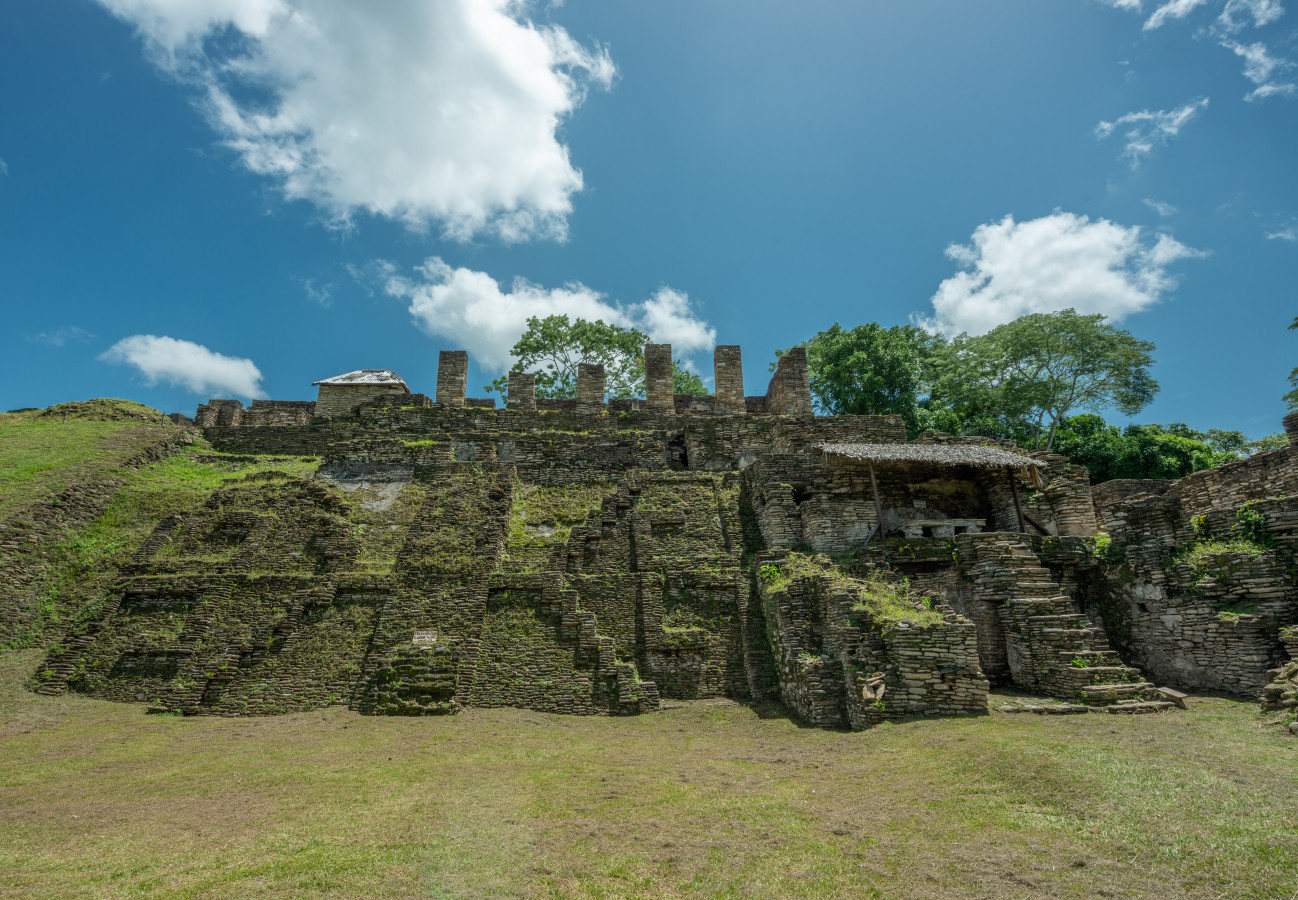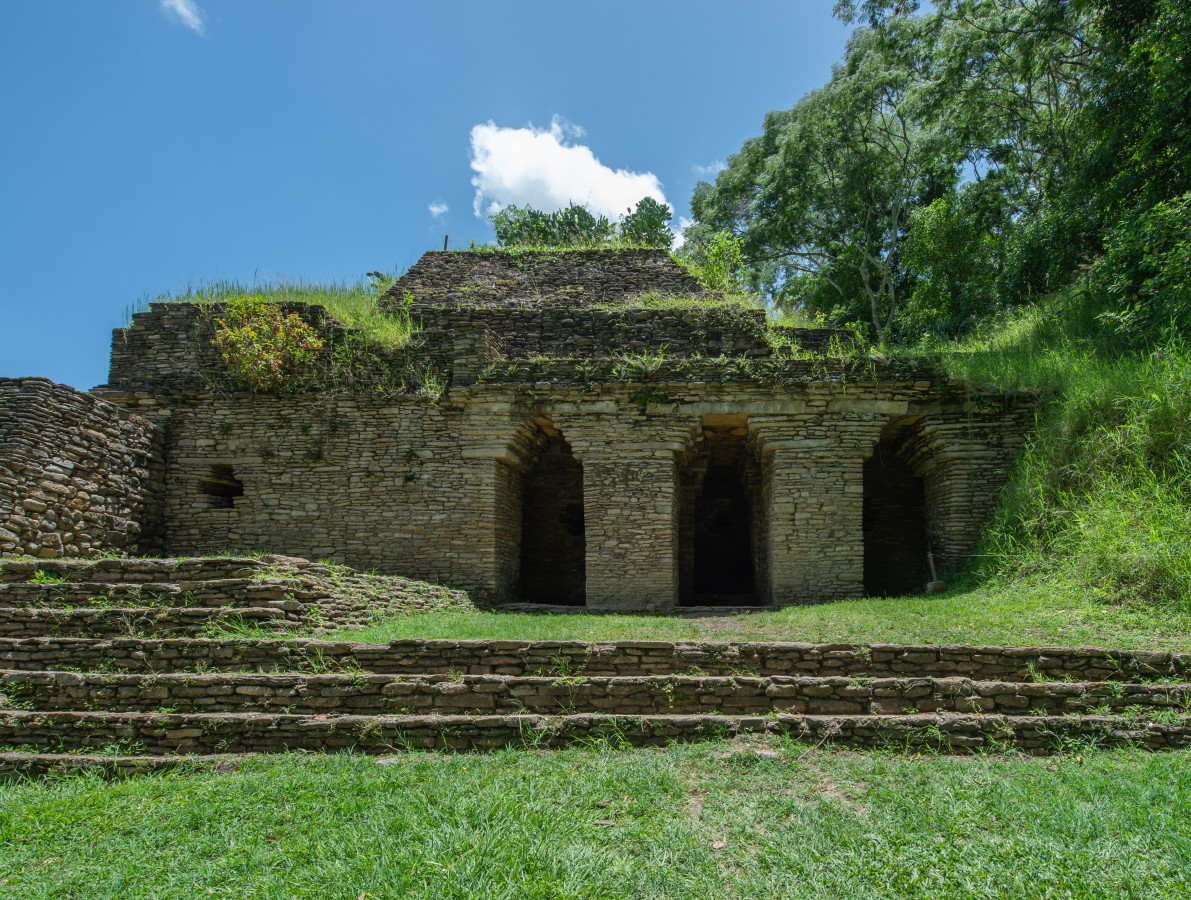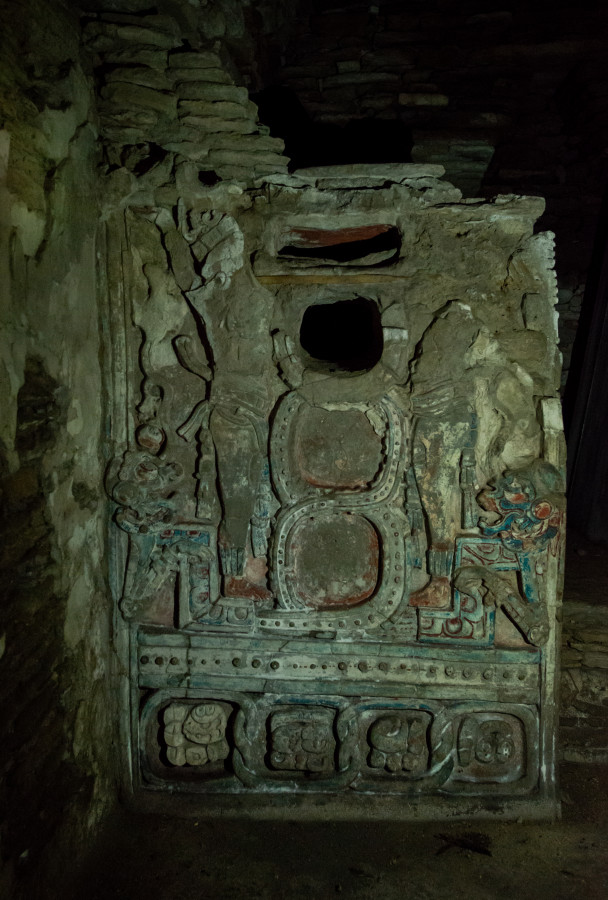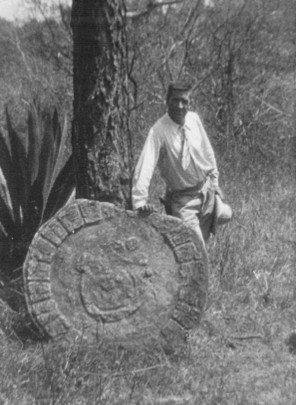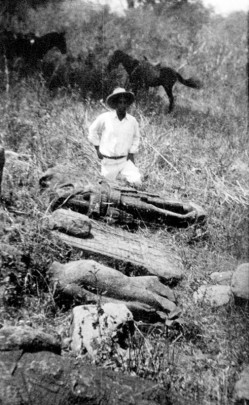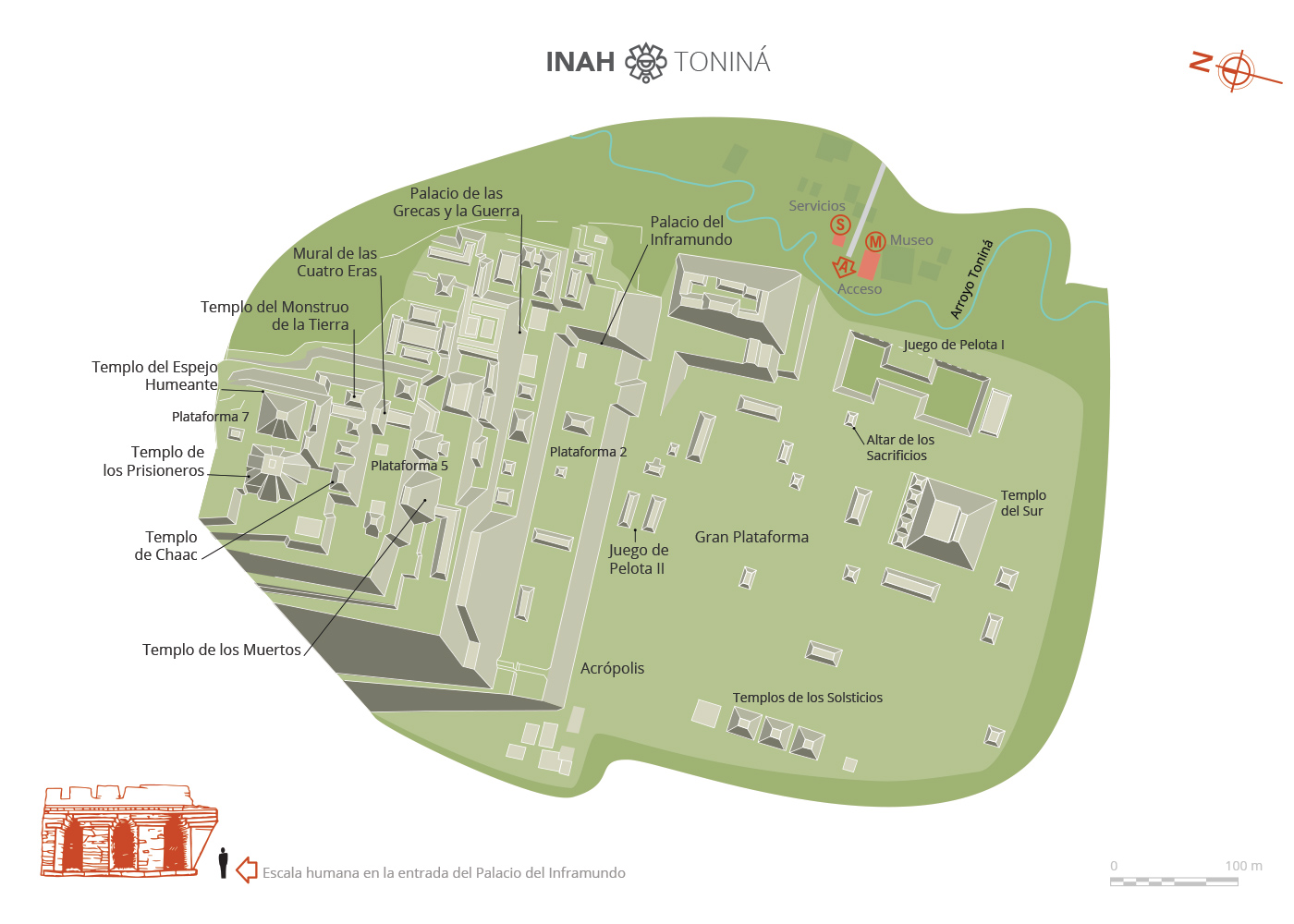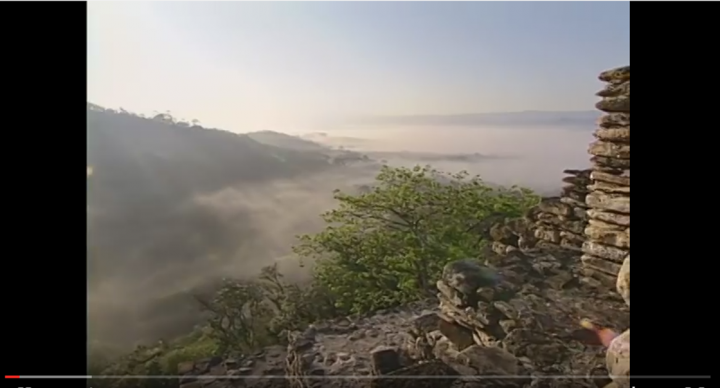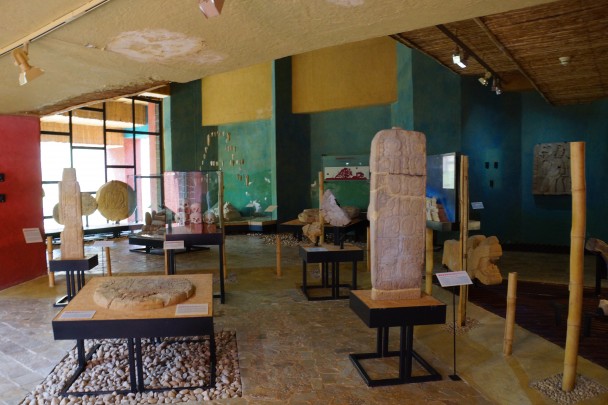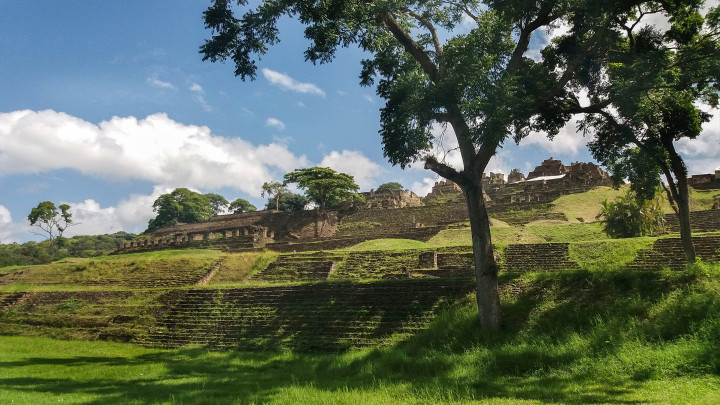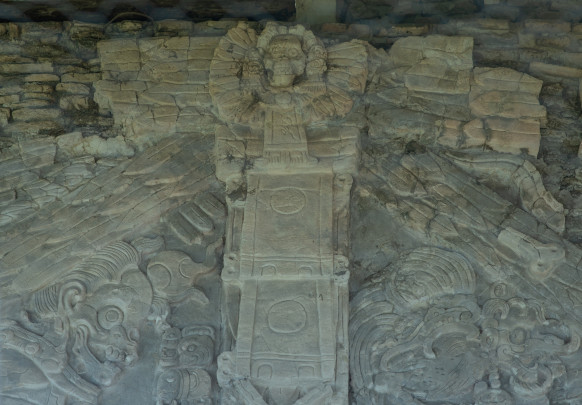Toniná
The stone house
Situated on the border of the Mayan highlands and the lowlands. A warrior state that overcame Palenque, and left a remarkable Acropolis, built of platforms one superposed upon another, and a pyramidal structure unique in the Mayan area due to its complexity and monumental size; it is even taller than the Pyramid of the Sun at Teotihuacan.
About the site
Toniná, a sacred Mayan space inhabited by a warlike people, sits on top of a hill that dominates the Ocosingo valley. The richness of this archeological site is comparable to other sites in Chiapas such as Palenque, but it is less well known. It reached its peak during the Classic period, from 600 to 900 AD, and it was the last witness to the decline of the Old Mayan Empire. In fact the last recorded date from this period - the year 909 - comes from Toniná. Its most important governor was Tzots Choj, "Bat-tiger."
The political-ceremonial center consisting of several buildings around the Acropolis and the Great Plaza is proof of Toniná’s splendor. The Acropolis contains the site’s most important structures. It was built at the top of a mountain that was artificially modified to create seven platforms with a height of 245 feet and facades that are 1050 feet wide. Through the middle runs a stairway which leads to these platforms which hold an enormous labyrinth of temples, palaces and structures connected to each other by roads. The general population lived around the periphery.
The most notable parts of the Great Acropolis are the Underworld, the Palace or House of the Bats, a complex where the governor lived and which is made up of a series of central patios around which there were rooms, including a bathroom, which was served by rainwater and had its own drainage system; the Frieze of the Four Eras, whose reliefs have been interpreted as portraying the myth of the four cosmological eras, represented by falling human heads; the Temple of the Smoking Mirror, located on the highest platform of the site and topped with a roof comb, and finally the Temple of the Earth Monster with a representation of the monster itself open-jawed and devouring a stone solar sphere.
Turning to the Great Plaza, this contains other structures including the ballcourt and the Sacrificial Altar. The ballcourt displays at least 10 sculptures of captives from Palenque and its ally Copán, the result of the 20 years of war which Toniná fought with both cities. The sculptures represent people with their hands and feet tied. Some researchers suggest that Toniná defeated Palenque and took two of Pakal's children prisoner. The site is entered through Ballcourt 1 or the Prisoners’ Court, one of the greatest of its time, where the Altar of the Sacrifices also stands.
The first modern reference to Toniná was by Friar Jacinto Garrido in the seventeenth century. In the nineteenth century the site was visited in turn by Guillermo Dupaix, John Lloyd Stephens and Frederick Catherwood, as well as by Eduard and Cecil Seler. In the twentieth century Franz Blom and Oliver LaFarge came to the place and made detailed descriptions of 30 monuments, including some sculptures never previously mentioned. In 1944 Eric Thompson and Sylvanus G. Morley spent a few days on the site to study its monuments and in 1972 excavation began under the auspices of the Mission Archeologique Française et Ethnologique au Mexique and the French Centre National de la Recherche Scientifique. Excavations continued between 1973 and 1974, and once again between 1979 and 1980. By the time the project finished the number of monuments recorded had risen to 141.
In 1980 INAH began the tasks of excavation and conservation of the archeological site, work which carries on today and has enabled the discovery of a great number of new buildings, as well as two sculptures representing prisoners of war. Toniná still holds many secrets that will be discovered thanks to this work.
The political-ceremonial center consisting of several buildings around the Acropolis and the Great Plaza is proof of Toniná’s splendor. The Acropolis contains the site’s most important structures. It was built at the top of a mountain that was artificially modified to create seven platforms with a height of 245 feet and facades that are 1050 feet wide. Through the middle runs a stairway which leads to these platforms which hold an enormous labyrinth of temples, palaces and structures connected to each other by roads. The general population lived around the periphery.
The most notable parts of the Great Acropolis are the Underworld, the Palace or House of the Bats, a complex where the governor lived and which is made up of a series of central patios around which there were rooms, including a bathroom, which was served by rainwater and had its own drainage system; the Frieze of the Four Eras, whose reliefs have been interpreted as portraying the myth of the four cosmological eras, represented by falling human heads; the Temple of the Smoking Mirror, located on the highest platform of the site and topped with a roof comb, and finally the Temple of the Earth Monster with a representation of the monster itself open-jawed and devouring a stone solar sphere.
Turning to the Great Plaza, this contains other structures including the ballcourt and the Sacrificial Altar. The ballcourt displays at least 10 sculptures of captives from Palenque and its ally Copán, the result of the 20 years of war which Toniná fought with both cities. The sculptures represent people with their hands and feet tied. Some researchers suggest that Toniná defeated Palenque and took two of Pakal's children prisoner. The site is entered through Ballcourt 1 or the Prisoners’ Court, one of the greatest of its time, where the Altar of the Sacrifices also stands.
The first modern reference to Toniná was by Friar Jacinto Garrido in the seventeenth century. In the nineteenth century the site was visited in turn by Guillermo Dupaix, John Lloyd Stephens and Frederick Catherwood, as well as by Eduard and Cecil Seler. In the twentieth century Franz Blom and Oliver LaFarge came to the place and made detailed descriptions of 30 monuments, including some sculptures never previously mentioned. In 1944 Eric Thompson and Sylvanus G. Morley spent a few days on the site to study its monuments and in 1972 excavation began under the auspices of the Mission Archeologique Française et Ethnologique au Mexique and the French Centre National de la Recherche Scientifique. Excavations continued between 1973 and 1974, and once again between 1979 and 1980. By the time the project finished the number of monuments recorded had risen to 141.
In 1980 INAH began the tasks of excavation and conservation of the archeological site, work which carries on today and has enabled the discovery of a great number of new buildings, as well as two sculptures representing prisoners of war. Toniná still holds many secrets that will be discovered thanks to this work.
Map
Did you know...
- Studies of the inscriptions have revealed that its original name was Poop, that means white in the Mixe-Zoque language.
- The central markers of the Ballgame I show two captives, the most notable of which is a Palenque ruler named Kan Hul.
- The pyramids are connected via roads that follow the ridges of the adjacent peaks.
- Six years ago a stone sarcophagus dating from 840-900 AD was discovered, containing skeletal remains and objects similar to those of the Red Queen of Palenque.
Practical information
Temporarily closed
Monday to Sunday from 08:00 to 17:00 hrs.
$80.00 pesos
Acceso únicamente a la Gran plaza
Se localiza en el sector norte del Valle de Ocosingo.
Services
-
+52 (961) 612 8360
Directory
Administradora de la Zona Arqueológica y del Museo de Sitio
Julissa Camacho Ramírez
This email address is being protected from spambots. You need JavaScript enabled to view it.
+52 (961) 612 2824, exts. 168000 y 168001

